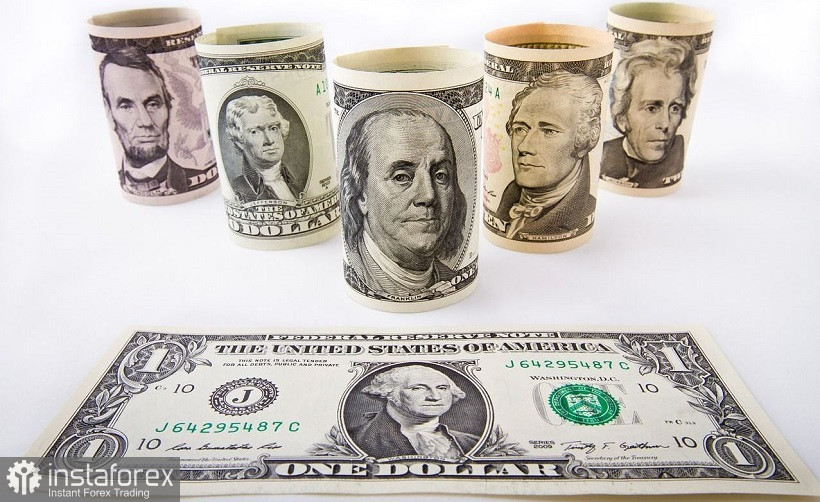The bears of the EUR/USD pair have renewed their monthly price low on Tuesday, approaching the lower border of the range of 1.1260–1.1360. The pair traded within this range for 6 weeks, from the end of November to January. However, since the 20th of December, traders have not approached the lower limit of this echelon: sellers fixed profits as soon as they found themselves in the area of the 12th figure. On Tuesday they turned out to be more persistent, against the backdrop of a general strengthening of the U.S. currency. The U.S. dollar index rallied again, fueled by hawkish expectations of market participants. In addition, the greenback followed Treasury yields, which also shows a positive trend.

The European currency, in turn, is not able to contain the onslaught of dollar bulls. Given that Monday's PMI data, as well as Tuesday's data from IFO, turned out to be in the "green zone," exceeding the forecast values. In particular, the German indicator of economic expectations from the IFO came out in January at around 95.2 points (against the forecast of growth to 93 points). But EUR/USD traders completely ignored the European releases. The tone of the trades is set by the greenback, which is waiting for the results of the January meeting of the Fed.
It should be noted that at the moment a rather dangerous situation is developing in the foreign exchange market. The U.S. currency is growing without any specific fundamental reasons. Traders live with hawkish expectations. At the beginning of the year, experts discussed the possibility of a double or triple rate hike in 2022. Then Atlanta Fed President Raphael Bostic allowed four rounds of promotion before the end of the year.
However, this scenario is not the most hawkish either: recently, the market has been talking about the fact that the Fed may raise interest rates at almost every meeting in 2022, in response to rising inflationary indicators in the United States.
Deutsche Bank analysts, in particular, spoke about such prospects. In their opinion, the American regulator may present a "hawkish surprise" tomorrow, stating that it will raise the rate 6 or 7 times by the end of the year, starting from the March meeting. In total, eight Fed meetings are scheduled this year, but "with a strong desire" Committee members can also organize an extraordinary meeting, as it was in 2020, at the height of the first wave of the coronavirus crisis.
In other words, traders' rates are really rising. In my opinion, this is not a completely "healthy" situation, which can turn into big losses for dollar bulls. By and large, the dollar is in demand in fulfillment of the trading principle "buy the rumor, sell the fact." Whether the second part of this algorithm will be executed is an open question, everything will depend on the results of the January Fed meeting. If the Fed limits itself to general phrases and does not implement the most hawkish expectations, the EUR/USD pair will go up again, and at an accelerated pace. The market will not be satisfied with half measures or veiled hints. The issued "credit of trust" will be demanded back "with interest."
The U.S. regulator will need to try hard to meet the requirements. Fed Chair Jerome Powell will have to, firstly, announce the first rate hike in March, secondly, announce the start of the Fed's balance sheet reduction in May, and thirdly, agree to the aggressive pace of rate hikes within the current year. This is, so to speak, a "minimum program," with the implementation of which the dollar will continue its path.
If Powell fails to sound unambiguous signals regarding the pace of rate hikes and the reduction of the Fed's balance sheet, the greenback will collapse throughout the market. In my opinion, the market is too "electrified" in this regard, thanks to a record increase in inflation, good Nonfarm Payrolls, and hawkish comments from representatives of the Federal Reserve.
On the eve of the meeting, they are forced to observe a "silence regime," but up to this point, many members of the Committee have clearly outlined their position. Among them are Brainard, Williams, Daly, Bostic, Mester, George, Barkin, Harker, Bullard. In one way or another, they voiced a "hawkish position," laying the foundation for the corresponding market expectations. The flywheel of the information wave began to gradually unwind, allowing dollar bulls to seize the initiative in almost all pairs.
But will the Fed be able to live up to its "expectations"? There is no answer to this question, there are only assumptions. Among the experts, there is no consensus on the possible outcome of the January meeting. According to some analysts, "desperate times call for desperate measures." Record inflation will allow the Fed to make extremely tough decisions without any foreplay. Others believe that the Fed's balance sheet cut will lead to a difficult policy normalization, and this fact could lower the forecasts for the number of rate hikes this year.
In view of such uncertainty, it is better to bypass dollar pairs today and tomorrow, unless, of course, trading is considered as a lottery. On the one hand, the pair continues to trade within the range of 1.1260–1.1360. But on the other hand, trading decisions are now emotional in nature (many fundamental factors are simply ignored), so it is extremely risky to open deals now, both in favor of the greenback and against it.
 English
English 
 Русский
Русский Bahasa Indonesia
Bahasa Indonesia Bahasa Malay
Bahasa Malay ไทย
ไทย Español
Español Deutsch
Deutsch Български
Български Français
Français Tiếng Việt
Tiếng Việt 中文
中文 বাংলা
বাংলা हिन्दी
हिन्दी Čeština
Čeština Українська
Українська Română
Română

